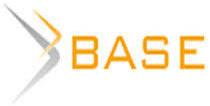DOI:
10.18413/2408-9338-2016-2-3-11-19
In the paper various sociological methodology and techniques of measurement of the religiousity, usable in regional sociological surveys are compared and evaluated in the aspect of their validity: the methodology accepted in the international researches, on the one hand, and the Post-Soviet techniques based on methodology of the Soviet sociology of religion as discipline originated under ideological influence of scientific atheism. The conclusion consists in the statement about the advantages of modern international sociological methodology and techniques as more relevant to a religious situation in the Russian society.
Number of views: 6501 (view statistics)
Количество скачиваний: 10232
All journals
Send article
Research result. Sociology and Management is included in the scientific database of the RINTs (license agreement No. 765-12/2014 dated 08.12.2014).
Журнал включен в перечень рецензируемых научных изданий, рекомендуемых ВАК


















While nobody left any comments to this publication.
You can be first.
1. The SAGE Handbook of the Sociology of Religion. SAGE Publications Ltd, 2007. P. 145.
2. Field C. Measuring Religious Affiliation in Great Britain: The 2011 Census in Historical and Methodological Context. 2014. Vol. 44. №3. Pp. 374-376.
3. Lee L. Secular or nonreligious? Investigating and interpreting generic ‘not religious’ categories and populations. Religion. 2014. Vol. 44. №3. P. 477.
4. Osipov G.V. (ed.) Working book of sociologist. Moscow: «LIBROCOM», 2009. P. 253.
5. The World's Newest Major Religion: No Religion. URL: http://news.nationalgeographic.com/2016/04/160422-atheism-agnostic-secular-nones-rising-religion.html (date of access: 23.04.2016)
6. Davie G. Is Europe an Exceptional Case? The Hedgehog Review. 2006. Spring & Summer. Pp. 23-34.
7. Voas D., Day A. Recognizing Secular Christians: Toward an Unexcluded Middle in the Study of Religion. ARDA Guiding Paper Series. URL: http://www.thearda.com/rrh/papers/guidingpapers/voas_essay.doc. (date of access: 23.04.2016)
8. Pew Research Center 2014 Religious Landscape Study (RLS-II) Main Survey of Nationally Representative Sample of Adults FINAL Questionnaire. May 30, 2014. URL: http://www.pewforum.org/files/2016/04/RLS-national-telephone-survey-questionnaire.pdf. (date of access: 23.04.2016)
9. Lebedev A.A. The secularization of the socialist city population. Towards a society free of religion (secularization process in a socialist society). Moscow: Mysl, 1970. P. 134.
10. Kublickaya E.A. Features of of studying of religiosity of the population in modern Russia (methodology and research methods). Sociological studies. 2009. №2. P. 102.
11. Ugrinovitch D.M. Introduction to Religious Studies. 2-nd edition., supp. Moscow.: Mysl, 1985. Pp. 139-140.
12. Lebedev A.A. The secularization of the socialist city population. Towards a society free of religion (secularization process in a socialist society). Moscow: Mysl, 1970. P. 138.
13. Lenin V.I. Letter to comrades. Omnibus edition. V. 34. P. 408. URL: http://leninism.su/works/73-tom-34/1711-pismo-k-tovarishham-34.html. (date of recourse: 23.04.2016).
14. Cozer L. The Functions of Social Conflict. Translation from Eng. by O.A. Nazarova. Moscow: Idea-Press, Dom intellektualnoy knigi, 2000. P. 123.
15. Levada U.A. The social nature of religion. Moscow: Nauka, 1965. P. 174.
16. Yablokov I.N. Sociology of religion. Moscow: Mysl, 1979. Pp. 129-130.
17. Ugrinovitch D.M. Introduction to Religious Studies. Moscow.: Mysl, 1985. Pp. 143-144.
18. Kublickaya E.A. Features of of studying of religiosity of the population in modern Russia (methodology and research methods). Sociological studies. 2009. №2. P. 97.
19. Voas D. The Rise and Fall of Fuzzy Fidelity in Europe. European Sociological Review. 2009. Vol. 25 №2. P. 156.